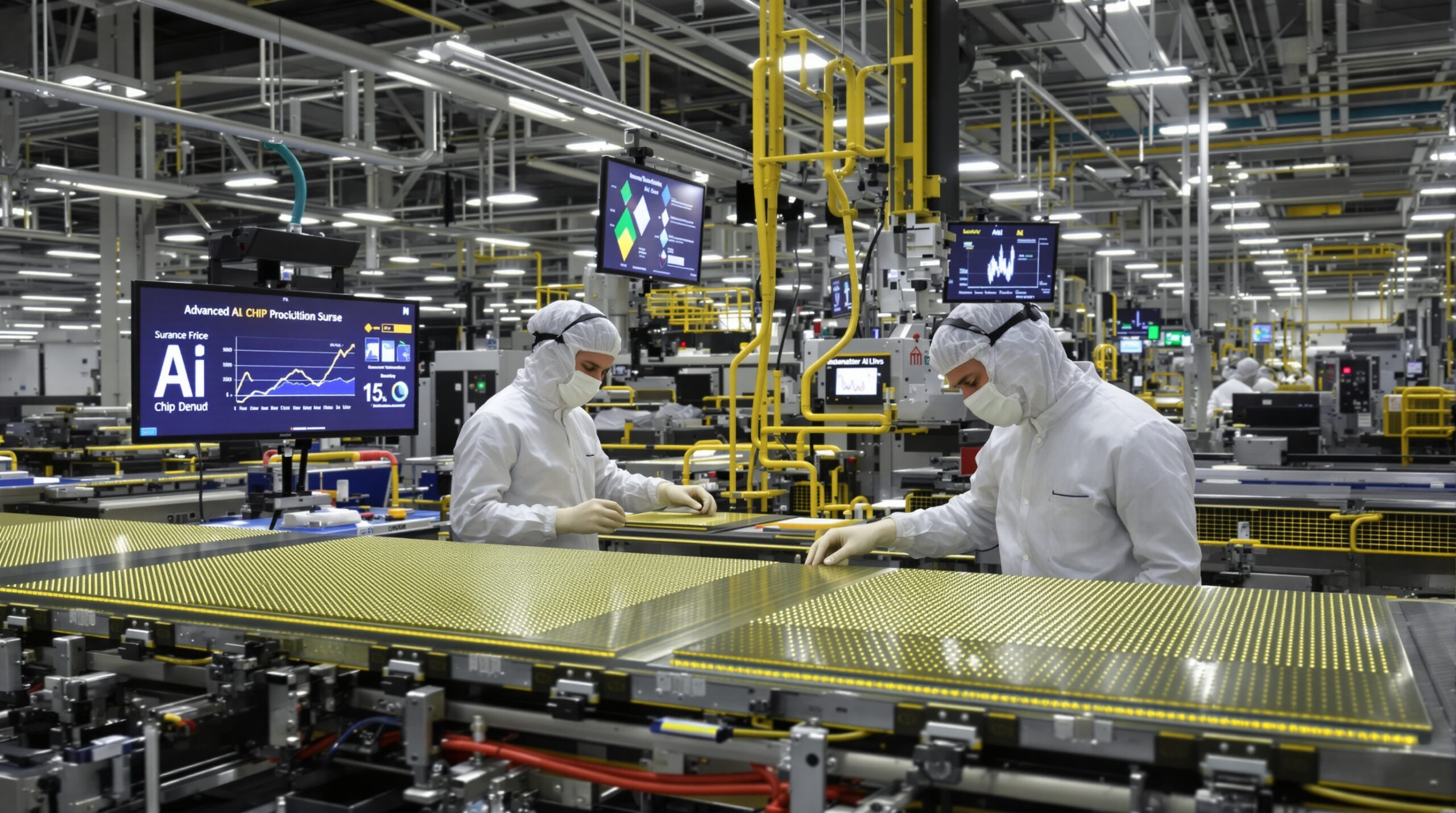The technology industry currently faces a transformative wave as artificial intelligence (AI) applications continue to expand. This growth has triggered unprecedented demand for AI-specific chips, dramatically reshaping global semiconductor supply chains. The effects reach from manufacturing facilities to logistics networks and supplier relationships.
AI Chips: Catalysts of Change in Global Electronics
AI chips power advanced computing tasks like neural networks, machine learning, and deep learning. They differ from traditional central processing units (CPUs), focusing on parallel processing, efficiency, and high-speed computations. Industry giants, including Nvidia, AMD, and Intel, continue to develop more sophisticated graphics processing units (GPUs) and application-specific integrated circuits (ASICs) for AI.
Cloud computing providers, enterprise data centers, and automotive manufacturers increasingly prioritize AI capabilities. This has prompted a shift in design and procurement strategies throughout the tech sector. Demand for high-performance chips now matches or even exceeds demand for general-purpose processors in several markets.
Demand for AI Chips Soars: Causes and Trends
Widespread adoption of generative AI, such as ChatGPT and DALL-E, is one primary driver behind soaring chip demand. These models require enormous computing power for both training and inference tasks, stressing existing hardware infrastructure. AI-powered healthcare imaging, autonomous vehicles, robotics, and smart city applications also require specialized chipsets.
Venture capital investment in AI startups surged in the last two years, spurring further demand for custom silicon. Governments and corporations worldwide are increasing investments in AI research, compelling chip manufacturers to ramp up production capabilities and diversify chip designs. Accelerated adoption of AI in Asia, Europe, and North America underscores the global scale of this trend.
Pressures on Foundries and Fabrication Facilities
Semiconductor foundries like Taiwan Semiconductor Manufacturing Company (TSMC) and Samsung handle complex manufacturing for cutting-edge AI chips. Meeting AI-chip requirements demands the most advanced manufacturing nodes, such as 5-nanometer and 3-nanometer processes. These nodes involve costly machinery and specialized expertise, creating production bottlenecks throughout the supply chain.
Lengthy lead times for advanced nodes have forced tech firms to book capacity years in advance. Urgency has grown so acute that customers sometimes compete for priority slots. Meanwhile, foundries are investing billions in expanding facilities to increase output and ease shortages, but building these fabs can take several years.
Materials and Equipment Supply Chains Face Strain
Manufacturing complex AI chips relies on exotic materials, such as rare earth metals and advanced photoresists. Suppliers of raw materials are scaling production as demand surges, yet constraints have emerged. Shortages of advanced lithography equipment, including extreme ultraviolet (EUV) machines, create additional hurdles.
Companies like ASML, the sole supplier of EUV lithography machines, face multi-year backlogs. Every downstream delay, from chemicals to testing equipment, compounds lead time challenges. Consequently, technology firms are signing longer-term contracts and seeking alternative suppliers to avoid future disruptions.
Supply Chain Diversification and Resilience Efforts
The vulnerability revealed by the recent global chip shortage prompted companies and governments to rethink supply chain structures. Major chip buyers increasingly demand geographic diversification to cut reliance on just one or two regions. US and European governments actively fund local fabs, aiming to secure technology leadership and national security.
For example, the US CHIPS and Science Act earmarks billions to support domestic semiconductor manufacturing. Similarly, the European Union established the European Chips Act to bolster regional chip production. These initiatives seek to strengthen supply chain resilience and reduce exposure to global shocks.
Strategic Partnerships and Vertical Integration
To secure crucial AI chip supplies, technology companies form close strategic partnerships with manufacturers and, in some cases, pursue vertical integration. Nvidia, Google, and Amazon increasingly design their own processors, collaborating closely with foundries for faster deployment and unique features. This trend helps optimize internal supply chain control and accelerates innovation.
Automotive firms producing electric vehicles and autonomous systems are also entering long-term agreements with chipmakers. By vertically integrating chip design and production, firms maintain direct oversight over critical technology. This strategy also reduces exposure to external supply shocks and component shortages.
Logistics and Inventory Adaptation
AI chip demand volatility has prompted new approaches to logistics, warehousing, and inventory management. Many companies now keep larger buffer stocks of essential components as a safeguard against potential disruptions. Logistic providers have also upgraded systems to handle time-sensitive, high-value chip shipments.
As a result, supply chain managers are investing in real-time tracking, predictive analytics, and multi-source procurement. These tools enhance visibility and flexibility, lessening the impact of future shortages or transportation delays. Firms are leveraging digital twins to model potential risks and optimize flows throughout the global network.
Potential Challenges and Future Outlook
Despite ongoing investments, scaling AI chip production faces persistent challenges. Environmental concerns, such as water and energy usage, complicate the expansion of advanced fabrication plants. Additionally, skilled workforce shortages threaten to slow technical progress in both manufacturing and design sectors.
Trade tensions and export controls further complicate the landscape. Policies that restrict sales of advanced chips to certain countries force global companies to adjust sourcing strategies. Geopolitical uncertainty adds complexity to planning and increases risk.
Nonetheless, ongoing innovation should help ease some constraints over time. Research into new chip architectures, advanced packaging, and alternative materials could improve efficiency and alleviate some supply chain pressure. Companies anticipate greater stability as investments in local manufacturing, supplier diversification, and logistics modernization bear fruit.
Conclusion: Lasting Transformation of Semiconductor Ecosystems
AI’s rapid proliferation has permanently reshaped upstream and downstream segments of semiconductor supply chains. Chipmakers, suppliers, and end-users have adapted to this surge by redefining sourcing, manufacturing, and logistics strategies. While challenges remain, the resilience being built today will help shape a future defined by advanced computation and global collaboration.

